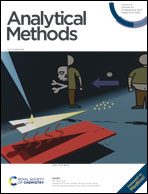Visualization of laser-induced breakdown spectroscopy data of mouse organs based on the feature extraction method
Abstract
At present, there is no comprehensive and systematic research on laser-induced breakdown spectroscopy (LIBS) data visualization. In particular, the LIBS spectra of biological samples have large noise and weak signals, which seriously affect the feature visualization. Here, three commonly used sample visualization methods were compared, and a new method was applied for tissue sample visualization. We used the LIBS mapping technique to obtain LIBS spectra of different organ slice samples from mice. LIBS spectral distribution was visualized after extracting the region of interest. The three spectral visualization methods are compared, and the performance of visualization algorithms is quantitatively analyzed. The potential of heat-diffusion for the affinity-based transition embedding (PHATE) method highlights the details of the LIBS spectral distribution while maintaining the overall structure of the data. The correlation coefficient between dimensionality reduction data and raw data is 0.97, and the average distance between samples of different categories is 0.64, which are superior to those of traditional principal component analysis (PCA), multidimensional scaling (MDS), and t-distributed stochastic neighbor embedding (t-SNE). The results show that the PHATE method can serve as a very promising LIBS spectral visualization tool.



 Please wait while we load your content...
Please wait while we load your content...